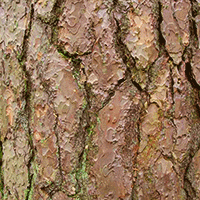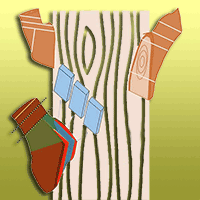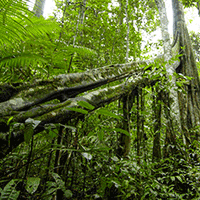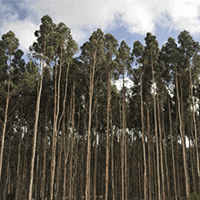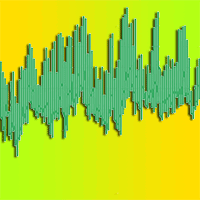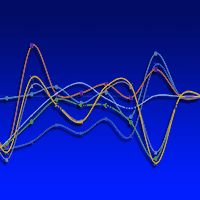As the outer layer of trees and shrubs, bark is exposed to the direct action of atmospheric conditions and reacts to changes in relative air humidity. This study focuses on the actual hygroscopicity of the bark, regarded as a component of the total bark retention capability. The main research aims were to: (1) determine the physical properties (specific density, bulk density, total porosity), actual hygroscopicity and maximum water storage capacity of the stem bark at breast height (1.3 m) of eight forest tree species; (2) assess the relationship between bark actual hygroscopicity and its physical properties; (3) determine the share of the actual hygroscopicity of bark in its maximum water storage capacity. Significant differences were observed among the different species considered as a consequence of the variation in physical properties of their bark. Actual hygroscopicity of bark (expressed in balance units), i.e., the maximum water amount that can be absorbed from saturated air by the outer bark layer, showed a significant relationship with bark physical properties. Depending on tree species, actual hygroscopicity may constitute from 10 to 30% of the maximum water storage capacity of bark.
Keywords
, , ,
Citation
Ilek A, Kucza J, Morkisz K (2016). Hygroscopicity of the bark of selected forest tree species. iForest 10: 220-226. - doi: 10.3832/ifor1979-009
Academic Editor
Giacomo Goli
Paper history
Received: Jan 12, 2016
Accepted: Jul 07, 2016
First online: Nov 06, 2016
Publication Date: Feb 28, 2017
Publication Time: 4.07 months
© SISEF - The Italian Society of Silviculture and Forest Ecology 2016
Open Access
This article is distributed under the terms of the Creative Commons Attribution-Non Commercial 4.0 International (https://creativecommons.org/licenses/by-nc/4.0/), which permits unrestricted use, distribution, and reproduction in any medium, provided you give appropriate credit to the original author(s) and the source, provide a link to the Creative Commons license, and indicate if changes were made.

Breakdown by View Type
(Waiting for server response...)
Article Usage
Total Article Views: 52937
(from publication date up to now)
Breakdown by View Type
HTML Page Views: 43262
Abstract Page Views: 4029
PDF Downloads: 4369
Citation/Reference Downloads: 111
XML Downloads: 1166
Web Metrics
Days since publication: 3349
Overall contacts: 52937
Avg. contacts per week: 110.65
Article Citations
Article citations are based on data periodically collected from the Clarivate Web of Science web site
(last update: Mar 2025)
Total number of cites (since 2017): 32
Average cites per year: 3.56
Publication Metrics
by Dimensions ©
Articles citing this article
List of the papers citing this article based on CrossRef Cited-by.
(1)
Aboal JR, Jiménez M, Morales D, Hernández JM (1999)Rainfall interception in laurel forest in the Canary Islands. Agricultural and Forest Meteorology 97: 73-86.
CrossRef |
Gscholar
(2)
Antkowiak L (1997)Wykorzystanie kory niektórych drzew i krzewów [The use of the bark of some trees and shrubs]. Wydawnictwo Akademii Rolniczej im. Augusta Cieszkowskiego, Poznan, Poland, pp. 1-10. [in Polish]
Gscholar
(3)
Barbier S, Balandier P, Gosselin F (2009)Influence of several tree traits on rainfall partitioning in temperate and boreal forests: a review. Annals of Forest Science 66 (6): 1-11.
CrossRef |
Gscholar
(4)
Barlow J, Lagan BO, Peres CA (2003)Morphological correlates of fire- induced tree mortality in a central Amazonian forest. Journal of Tropical Ecology 19: 291-299.
CrossRef |
Gscholar
(5)
Bates JW, Brown DH (1981)Epiphyte differentiation between
Quercus petraea and
Fraxinus excelsior trees in a maritime area of South West England. Vegetatio 48 (1): 61-70.
CrossRef |
Gscholar
(6)
Bauer G, Speck T, Blömer J, Bertling J, Speck O (2010)Insulation capability of the bark of trees with different fire adaptation. Journal of Materials Science 45: 5950-5959.
CrossRef |
Gscholar
(7)
Biggs AR (1992)Anatomical and physiological responses of bark tissues to mechanical injury. In: “Defense mechanisms of woody plants against fungi” (Blanchette RA, Biggs AR eds). Springer, Berlin-Heidelberg, Germany, pp. 13-40.
CrossRef |
Gscholar
(8)
Brown JH, Barker AC (1970)An analysis of throughfall and stemflow in mixed oak stands. Water Resources Research 6 (1): 316-323.
CrossRef |
Gscholar
(9)
Bryant ML, Bhat S, Jacobs JM (2005)Measurements and modeling of throughfall variability for five forest communities in the southeastern US. Journal of Hydrology 312: 95-108.
CrossRef |
Gscholar
(10)
Crockford RH, Richardson DP (2000)Partitioning of rainfall into throughfall, stemflow and interception: effect of forest type, ground cover and climate. Hydrological Processes 14: 2903-2920.
CrossRef |
Gscholar
(11)
Grochowski W (1990)Uboczna produkcja lesna [Non-wood forest products]. PWN, Warszawa, Poland, pp. 50-100. [in Polish]
Gscholar
(12)
Hengst GE, Dawson JO (1994)Bark properties and fire resistance of selected tree species from the central hardwood region of North America. Canadian Journal of Forest Research 24 (4): 688-696.
CrossRef |
Gscholar
(13)
Herwitz SR (1985)Interception storage capacities of tropical rainforest canopy trees. Journal of Hydrology 77: 237-252.
CrossRef |
Gscholar
(14)
Hutchinson I, Roberts MC (1981)Vertical variation in stemflow generation. Journal of Applied Ecology 18: 521-527.
CrossRef |
Gscholar
(15)
Ilek A, Kucza J (2014)Hydrological properties of bark of selected forest tree species. Part I: the coefficient of development of the interception surface of bark. Trees 28: 831-839.
CrossRef |
Gscholar
(16)
Kapur SN, Narayanamurti D (1934)Hygroscopicity of tree barks. Indian Forester 60 (10): 702-707.
Gscholar
(17)
Klamerus-Iwan A (2014)Potential interception in laboratory condition under simulated rain with low intensity. Sylwan 158 (4): 292-297.
Gscholar
(18)
Kozlowski TT (1992)Carbohydrate sources and sinks in woody plants. The Botanical Review 58: 108-222.
CrossRef |
Gscholar
(19)
Kozlowski R, Józwiak MA, Borowska E (2010)Porównanie wybranych metod do obliczania wysokosci opadu splywajacego po pniach [Comparison of selected methods for calculation of stemflow volume]. Monitoring Srodowiska Przyrodniczego, Kieleckie Towarzystwo Naukowe, Kielce 11: 25-33. [in Polish]
Gscholar
(20)
Kraszkiewicz A (2009)Analiza wybranych wlasciwosci chemicznych drewna i kory robinii akacjowej (
Robinia pseudoacacia L.) [Analysis of selected chemical properties of wood and bark of black locust (
Robinia pseudoacacia L.)]. Inzynieria Rolnicza 8 (117): 69-75. [in Polish]
Gscholar
(21)
Krzysik F (1974)Nauka o drewnie [The science of wood]. PWRiL, Warszawa, Poland, pp. 95-150. [in Polish]
Gscholar
(22)
Kubiak M, Laurow Z (1994)Surowiec drzewny [Wood raw material]. Fundacja Rozwój SGGW, Warszawa, Poland, pp. 275-278. [in Polish]
Gscholar
(23)
Kucza J (2005)Theoretical and practical aspects of calculating the water storage in forest soils. Part I. Non-skeletal soils. Sylwan 9: 24-33.
Gscholar
(24)
Kuusinen M (1996)Epiphyte flora and diversity on basal trunks of six old- growth forest tree species in southern and middle boreal Finland. The Lichenologist 28 (5): 443-463.
CrossRef |
Gscholar
(25)
Legates DR, Levia DF, Van Stan II JT, Velasco Herrera VM (2014)Using wavelet analysis to examine bark microrelief. Trees 28: 413-425.
CrossRef |
Gscholar
(26)
Levia DF, Frost EE (2003)A review and evaluation of stemflow literature in the hydrologic and biogeochemical cycles of forested and agricultural ecosystems. Journal of Hydrology 274: 1-29.
CrossRef |
Gscholar
(27)
Levia DF, Germer S (2015)A review of stemflow generation dynamics and stemflow-environment interactions in forests and shrublands. Reviews of Geophysics 53 (3): 673-714.
CrossRef |
Gscholar
(28)
Levia DF, Herwitz SR (2005)Interspecific variation of bark water storage capacity of Tyree deciduous tree species in relation to stemflow yield and solute flux to forest soils. Catena 64: 117-137.
CrossRef |
Gscholar
(29)
Levia DF, Van Stan IIJT, Mage SM, Kelley-Hauske PW (2010)Temporal variability of stemflow volume in a beech-yellow poplar forest in relation to tree species and size. Journal of Hydrology 380: 112-120.
CrossRef |
Gscholar
(30)
Levia DF, Wubbena NP (2006)Vertical variation of bark water storage capacity of
Pinus strobus L. (Eastern white pine) in southern Illinois. Northeastern Naturalist 13 (1): 131-137.
CrossRef |
Gscholar
(31)
Liu SG (1997)A new model for the prediction of rainfall interception in forest canopies. Ecological Modelling 99: 151-159.
CrossRef |
Gscholar
(32)
Llorens P, Gallart F (2000)A simplified method for forest water storage capacity measurement. Journal of Hydrology 240: 131-144.
CrossRef |
Gscholar
(33)
Llorens P, Poch R, Latron J, Gallart F (1997)Rainfall interception by a
Pinus sylvestris forest patch overgrown in a Mediterranean mountainous abandoned area. I. Monitoring design and results down to the event scale. Journal of Hydrology 199: 331-345.
CrossRef |
Gscholar
(34)
Meyer RW, Kellogg RM, Warren WG (1981)Relative density, equilibrium moisture content, and dimensional stability of western hemlock bark. Wood and Fiber 13 (2): 86-96.
Online |
Gscholar
(35)
Öztürk S, Oran S (2011)Investigations on the bark pH and epiphytic lichen diversity of
Quercus taxa found in Marmara Region. Journal of Applied Biological Sciences 5 (1): 27-33.
Gscholar
(36)
Pinard MA, Huffman J (1997)Fire resistance and bark properties of trees in a seasonally dry forest in eastern Bolivia. Journal of Tropical Ecology 13 (5): 727-740.
CrossRef |
Gscholar
(37)
PKN-CEN-ISO/TS-17892-3 (2009)Badania geotechniczne. Badania laboratoryjne gruntów. Czesć 3: Oznaczanie gestosci wlasciwej - Metoda piknometru [Geotechnical studies. Laboratory tests of the soil. Part 3: Determination of specific density - The pycnometer method]. Polski Komitet Normalizacyjny, Poland, pp. 1-11. [in Polish]
Gscholar
(38)
Prosinski S (1984)Chemia drewna [Chemistry of wood]. PWRiL, Warszawa, Poland, pp. 20-65. [in Polish]
Gscholar
(39)
Quilhó T, Pereira H (2001)Within and between-tree variation of bark content and wood density of
Eucalyptus globulus in commercial plantations. IAWA Journal 22 (3): 255-265.
CrossRef |
Gscholar
(40)
Raczkowski J (1979)Swelling properties of bark. Wood Science and Technology 13 (3): 187-196.
CrossRef |
Gscholar
(41)
Schulz H, Popp P, Huhn G, Stärk HJ, Schüürmann G (1999)Biomonitoring of airborne inorganic and organic pollutants by means of pine tree barks. I. Temporal and spatial variations. Science of The Total Environment 232 (1): 49-58.
CrossRef |
Gscholar
(42)
Stephenson SL (1989)Distribution and ecology of myxomycetes in temperate forests. II. Patterns of occurrence on bark surface of living trees, leaf litter, and dung. Mycologia 81: 60-621.
CrossRef |
Gscholar
(43)
Trampler T, Kliczkowska A, Dmyterko E, Sierpinska A (1990)Regionalizacja przyrodniczo-lesna na podstawach ekologiczno-fizjograficznych [The nature and forest regionalisation on the ecological and physiographic basics]. PWRiL, Warszawa, Poland, pp. 51-65. [in Polish]
Gscholar
(44)
Van Stan JT, Jarvis MT, Levia DF (2010)An automated instrument for the measurement of bark microrelief. IEEE Transactions on Instrumentation and Measurement 59: 491-493.
CrossRef |
Gscholar
(45)
Van Stan JT, Lewis ES, Hildebrandt A, Rebmann C, Friesen J (2015)Impact of interacting bark structure and rainfall conditions on stemflow variability in a temperate beech-oak forest, central Germany. Hydrological Sciences Journal 61 (11): 2071-2083.
CrossRef |
Gscholar
(46)
Voigt GK (1960)Distribution of rainfall under forest stands. Forest Science 6 (1): 2-10.
Gscholar
(47)
Voigt GK, Zwolinski MJ (1964)Absorption of stemflow by bark of young red and white pines. Forest Science 10: 277-282.
Online |
Gscholar
(48)
Wang S, Littell RC, Rockwood DL (1984)Variation in density and moisture content of wood and bark among twenty
Eucalyptus grandis progenies. Wood Science and Technology 18 (2): 97-100.
CrossRef |
Gscholar
(49)
Young C (1938)Acidity and moisture in tree bark. Proceedings of the Indiana Academy of Science 47: 106-115.
Gscholar
